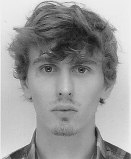Résumé de thèse
Cette étude porte sur la place du photomontage dans le graphisme français de l’entre-deux-guerres, plus particulièrement dans la presse illustrée, l’affiche et la propagande politique. Fondé sur la combinaison d’éléments photographiques de façon à créer des images composites, généralement reproduites par impression photomécanique, le photomontage a été promu par les graphistes d’avant-garde mais aussi par les éditeurs de presse à grand tirage. Il devient à partir des années 1920 un élément caractéristique de la culture visuelle moderne, jusqu’à investir très largement les pavillons de l’Exposition internationale de 1937. Si les développements du photomontage en URSS et en Allemagne sont bien connus, la France a souvent été considérée comme réticente à l’usage de ce procédé, privilégiant un modernisme mesuré et un ancrage dans le dessin. En analysant le rôle des réseaux culturels communistes dans le développement du photomontage politique, nous identifions des phénomènes de transferts culturels étroitement liés à la sociabilité militante. L’étude de la production imprimée des organisations de gauche permet d’expliciter les fonctions attribuées à l’image comme moyen d’influence politique. Sur le plan iconographique, les photomontages se caractérisent par des procédés rhétoriques qui orientent la lecture du document photographique. Sur le plan du montage, s’opère une conjonction de temporalités hétérogènes. En prêtant une attention particulière à la fois aux conditions de production, aux réseaux d’acteurs et aux discours de légitimation, nous proposons un essai en iconologie politique qui en même temps se situe au plus près de la matérialité des images.
This study examines the place of photomontage in French graphic design between the two world wars, particularly in the illustrated press, posters and political propaganda. Based on the combination of photographic elements to create composite images, generally reproduced by photomechanical printing, photomontage was promoted by avant-garde graphic designers but also by editors of large-circulation magazines. From the 1920s onwards, it became a characteristic element of modern visual culture, until it was widely used in the pavilions of the 1937 International Exhibition in Paris. While the developments of photomontage in the USSR and Germany are well known, France was often considered to be reluctant to this technique, favouring instead a measured modernism and drawn illustrations. By analysing the role of communist cultural networks in the development of political photomontage, we identify phenomena of cultural transfer closely linked to militant sociability. The study of the printed production of left-wing organisations makes it possible to clarify the functions attributed to the image as a means of political influence. On the iconographic level, photomontages are characterised by rhetorical processes which guide the reading of the photographic document. On the level of montage, they allow for a conjunction of heterogeneous temporalities in a single image. By paying attention to the conditions of production, to the networks of actors and to the discourses of legitimation, this essay in political iconology remains as close as possible to the materiality of images.
Direction de thèse
- Rémi Labrusse, Université Paris Nanterre, laboratoire HAR
- Christian Joschke, Université Paris Nanterre, laboratoire HAR
Biographie
Diplômé de l’École du Louvre et doctorant en histoire de l’art à l’Université Paris-Nanterre, sous la direction de Rémi Labrusse et Christian Joschke. Il soutient en novembre 2020 une thèse intitulée « Propagande graphique. Le photomontage dans la culture visuelle de la gauche française (1925-1939). » Entre histoire du graphisme et histoire de la photographie, ses travaux interrogent le rôle des réseaux militants transnationaux dans la propagation de nouvelles stratégies graphiques, qui détournent le document photographique pour en faire un outil de critique idéologique. Il a publié des articles dans les revues Études photographiques, SHIFT: Graduate Journal of Visual and Material Culture, Image[&]Narrative, Artefact, ainsi que dans le catalogue de l’exposition Photographie arme de classe (Centre Pompidou, 2018). Plus récemment, il a contribué au volume collectif Technique & design graphique, dirigé par Vivien Philizot et Jérôme Saint-Loubert Bié (éditions B42, 2020).
Graduate of the Ecole du Louvre and PhD student in art history at the University of Paris Nanterre, under the supervision of Rémi Labrusse and Christian Joschke. In November 2020, he will defend a dissertation entitled “Graphic Propaganda : Photomontage and the Visual Culture of the Left in France (1925-1939)". Between the history of graphic design and the history of photography, his work questions the role of transnational militant networks in the propagation of new graphic strategies, which subvert the photographic document to turn it into a tool for ideological criticism. He has published articles in the journals Études photographiques, SHIFT: Graduate Journal of Visual and Material Culture, Image[&]Narrative, Artefact, as well as in the catalogue of the exhibition Photographie, arme de classe (Centre Pompidou, 2018). More recently, he contributed to the collective volume Technique & design graphique, edited by Vivien Philizot and Jérôme Saint-Loubert Bié (B42 editions, 2020).
Soutenance de thèse
13 novembre 2020 – Institut national d’histoire de l’art (INHA), Paris
Pour en savoir plus: lien vers article de design en recherche
Composition du jury
- Catherine de Smet, Université Paris 8 - Saint-Denis, laboratoire TEAMED (rapporteur)
- Bertrand Tillier, Université Paris 1 Panthéon-Sorbonne, laboratoire ISOR (rapporteur)
- André Gunthert, EHESS, CRAL (examinateur)
- Romy Golan, Graduate Center, City University of New York (examinateur)
- Rémi Labrusse, Université Paris Nanterre, laboratoire HAR (directeur)
- Christian Joschke, Université Paris Nanterre, laboratoire HAR (co-directeur)
